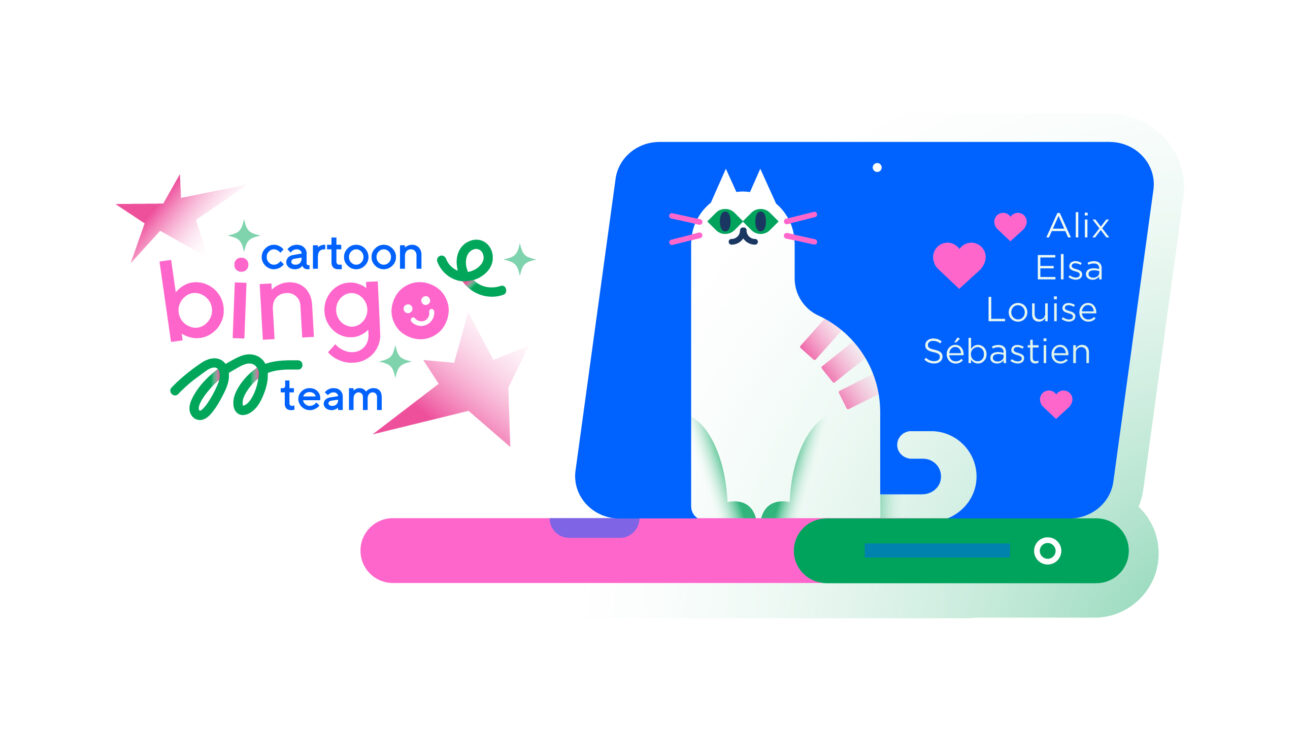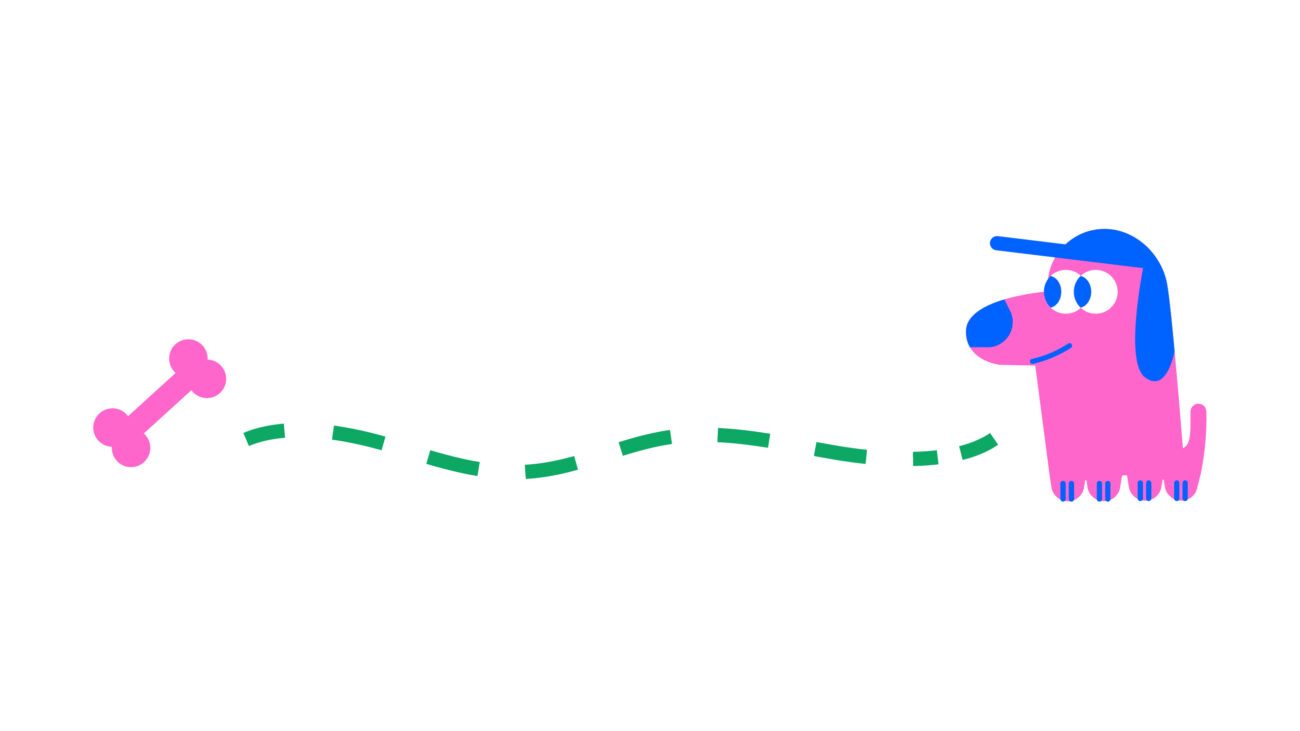There are many ways to get a message across. You can tag it on a wall. Shout it in your neighbour’s ear. Hit the nail until it sinks. Or you can opt for a method that actually works: tell a story. A story with a beginning, a twist, a climax, and an end, which uses images to achieve a specific goal. A story that your audience will understand, enjoy, and remember.
At Cartoonbase, this is our speciality. We harness the combined strength of words and illustrations to help organisations tell all kinds of stories.
Whenever a client comes to us with a challenge (“Hi, I’m looking to share my enthusiasm for our new, super complicated strategy with my 10,000 colleagues across four continents. Can you help?”), we start by suggesting various formats to meet it. It could be a series of videos, an interactive platform, online workshops, a live event, all of the above, if other please specify. We sort out the practical details, assemble a team, and schedule the project. This is when the moment that will make the difference comes in: the blinkstorming.
The blinkstorming is the meeting where we decide what we’re going to tell and how we’re going to tell it. It charts out the narrative concept of a project. It takes place at the beginning of the creative process and sets the tone for the entire production.
What is a blinkstorming?
For us, every piece of content should surprise with the creativity with which it stages a message. Not just by the way the content is dressed up, but more importantly, by what the content is saying, and how it says it. These two aspects, the what and the how, form the backbone of storytelling. And it’s during the blinkstorming that we imagine and set the story that will be told – the narrative concept of the project.
Why, you might ask, do we call it a blinkstorming and not just a brainstorming? Glad you asked. For two reasons.
First, because a brainstorming is a meeting that can drag on for a long time. And we’ve set ourselves the constraint to be done “in a blink of an eye”. Everything must be wrapped up in an hour, at most. A blinkstorming, then, is a storm that takes place in a flash.
Second, because we want ideas to burst forth, to emerge, to erupt. We encourage intuition, association of ideas, immediacy, and agility in a flow close to the language spoken in dreams. In his book “Blink: The Power of Thinking Without Thinking“, Malcolm Gladwell argues that decisions made instinctively can be as good, if not better, than those made after deliberate analysis. This is the essence of blinkstorming: a brainstorming session during which participants are encouraged to share their immediate intuitions or instinctive reactions to an idea or problem, rather than spending a lot of time rationalising various propositions. The goal is to capture that instinctive intelligence that sometimes gets lost in overly analytical thinking.
Thinking together
It’s when we think without thinking that creativity springs forth.
There’s more in two heads than in one
When two people think together, there’s an exchange, a circulation of ideas.
Have you ever tried to find solutions to a problem on your own, come up with three, discussed them with others, and realised that all three are more or less of the same kind? That you would have had to look at the problem entirely differently to hit a truly original result?
That’s precisely where our blinkstorming comes in.
A blinkstorming is a conversation that allows the same object to be perceived, processed, and interpreted by different minds simultaneously. Minds that think in images, words, sequences, flows. The more diverse these minds are, the more out of the box the result.
And even more in three than in two
When three people think together, there’s a middle path.
In a blinkstorming (and in life in general?) the third path is always the most creative. Even if it’s not necessarily the one that comes out third. The third path lies somewhere between yes and no, black and white. It’s the path that takes the one and the other, the path of neither of them, the path that picks part of one, part of the other, or any other tangent path you can think of. That’s where the creativity begins.
Provided we agree on some principles
- All ideas are welcome. Even more: all ideas are necessary. The more elements there are, the more we can combine, juxtapose, cut, or move them.
- Any position for or against an idea must be justified. Promptness in proposition, but well-constructed stances in decision.
- We build upon what others say. We say “yes and,” not “yes but.”
- We encourage surprises, counter-moves, rebounds, and why not backflips.
- We try not to identify with our ideas to avoid taking things personally.
- We don’t judge anyone based on the quality of their contributions. Because we have bad days too.
- We lighten the mood. Humour is an excellent ally of blinkstorming: both operate on principles of agility and association of ideas.
By the way, if you’re interested in this topic, you’ll find many more tips to boost creative sessions in our blog How to organise a successful creative session.
The result is worth the effort
The output? A clear creative concept that will guide the creative team throughout production.
At Cartoonbase, as elsewhere in the profession, content production is sequenced. In the case of a video, for instance, the sequence is: script, storyboard, illustrations, animation, voice, sound. The creative concept is the intent that permeates each of these stages. It sets the tone of the writing, the look of the storyboard, the style of the visuals, the rhythm of the editing, and the intonation of the voice-over.
Here, we work one step at a time. We try as much as possible to get together at the end of each stage to discuss, however briefly, the work that has been done. But sometimes, time constraints encroach on these moments. The risk is then to work in silos, cut off from each other. The creative concept that emerges from a blinkstorming is the thread that will hold the different stages of production together.
The outcome? A storyline that unites the team and empowers its members.
Blinkstorming creates a team spirit. For each assignment, a new mini-team of experts is formed. On each project, there’s a new network of skills, new interactions, a new dynamic. Blinkstorming is an opportunity to bond with this team around a common project.
Finally, blinkstorming creates individual ownership. Because everyone involved has contributed to shaping the project from the outset, the project becomes their responsibility, individually, to the extent of their expertise.
Behind the scenes
Preparing for the creative stage.
Breaking the ice
“My son is teething, we’ve been up all night”
“Who’s eating what for lunch?”
“Haven’t you read Ernaux’s latest?”
“Who’s seen my headphones?”
“I’m just having a coffee and I’m ready”
We catch up, make a couple of jokes, get in the mood. It’s very short, but absolutely essential for creating a team spirit. The better the atmosphere, the better the work.
Briefing
The Project Manager (PM) briefs the team.
Who is the client? What is the challenge… the format… And the tone? Do they already know what they want? In what language(s)? By when?
- What’s the message?
Inform about V
Launch the W strategy
Raise awareness of X
Simplify Y
Sell Z
… - To whom?
Internal
External
General public policymakers
Children/young people
… - With a view to what?
Convince
Inform
Call to action
Ask questions
Raise funds
Generate desire
Generate enthusiasm
Surprise
Arouse curiosity
Move
Entertain
… - What tone?
Light
Serious
Casual
Formal
Irreverent
Respectful
Enthusiastic
Factual
…
By the way again, we’ve put together a series of sliders to help our clients refine their tone requests.
Strategy
Next, we establish a strategy to achieve this objective.
What story can we tell so that the content surprises with the creativity with which it stages a message?
Here’s where the iterations begin.
“The other day, I was at the dentist’s and I saw…”
“How about ravioli instead of lasagna for quantum computing?”
“I picture something rhythmic, without being hectic.”
Our iterations can last anything between 13 minutes and three quarters of an hour. The whole operation can never last more than an hour.
Bingo!
And when we’re short of inspiration? We dabble in Bingo.
Bingo is a repertoire of strategies designed to give an original form to the content we transform. As time is often short, it has been designed to be as practical and immediate as possible. The principle is very simple: we adapt each (or a selection) of the bingo boxes to the objectives that have just been set. We debate, come up with variations, mix them up, turn back, change course, until we find the right idea.
1. Adopt a point of view (write in “I”) – Invent a character and have him/her tell their version of the story. This technique brings a human touch to any subject, even the most technical.
2. An introduction before diving into the heart of the matter – What if, for a video on change management, you started with a 15-second interview in the company’s hallways? An opportunity to be offbeat and subtly introduce the topic while creating suspense.
3. The graphic concept – Set yourself a visual constraint and stick to it throughout the content, thinking by analogy. An original aesthetic option.
4. The interview parody – This option immediately creates a dynamic staging and offers the opportunity to invent a variety of characters.
5. Add emotion – This “extra” touch can be added to another concept to create a surprise effect. The emotion can be a sequence of the video or expressed through colours, movement, or sound.
6. Play with the tone of voice – What if the text was read by a child? A phlegmatic Englishman? A spirited grandmother? A group of friends? A soccer commentator?
7. Surprise with a twist – A hairpin story that creates a dramatic turn of events. An option that can be mind-blowing at times.
8. Write in you – This technique creates intimacy with the viewer, breaks with expected codes and makes the rendering more dynamic.
9. Ask an intriguing question – An original way to spark curiosity. And the less engaging the initial topic is at first glance, the more effective a funny question will be!
10. Endow characters with a goal to achieve – This technique allows introducing a solution/aid to overcome certain obstacles.
11. Use a real interview as a voiceover – Conduct an interview with an expert on the subject and use it as raw material for the voiceover. This technique allows for a more sincere, less professorial tone of voice.
12. Focus on the impression rather than the product – Suspense caused immediately by the impression the product creates on the consumer, without the product being shown.
13. Find a metaphor to develop the explanation – Offer the explanation in a different context, for greater clarity. The challenge? Finding the right image.
14. Irony – Tell the opposite of the truth to highlight it. One thing is certain: it’s memorable!
15. The double narrative – A very elegant technique that alternates between two perspectives on the same series of events. It’s generally about two characters each pursuing their quest separately.
16. The silent video – A strategy that conveys information and emotions through visuals and sound alone.
The topics we deal with have immense potential. The most creative way to approach them is a mix of genres. Our task at this stage is to remain bold and above all not to give in to the sirens of self-censorship.
Note of intent
When there’s white smoke, we explain our decisions in writing in a note of intent. The statement of intent is a short, simple text that summarises the project’s objective and the strategy chosen to achieve it.
- It’s an opportunity to set out our artistic choices.
- It is the basis for justifying these choices to our clients.
- It’s a guarantee that everyone involved in the project is aware of the creative intents and can bring them to life at their own level.
A highly effective model
We’ve all taken part in countless corporate brainstorming sessions. There’s a big board, sometimes frighteningly white, or a pad of post-it notes on a table, with markers. The colour codes are set, the groups are defined, the instructions are clear. Silence, it’s rolling. The morning coffees are starting to kick in. The first ideas find their way into the light of day. They fall haphazardly. You smile inwardly hearing that colleague who won’t budge on her project, or that other whose reactions are so predictable when working in a team. You stir, follow a course, turn, diverge, backtrack, add, agree, multiply, unfold.
Two hours have passed.
“So, what now?”
“Let’s meet again next week.”
Can this kind of outcome be avoided? Of course.
It can be avoided if you consider that blinkstorming is about achieving objective X in time Y. And if you don’t manage to achieve it, it’s partly (not exclusively, of course) because the objective is either too vague or too ambitious for the time available.
It can be avoided if someone acts as a timekeeper, moderating the discussion to make sure it lands somewhere. Their job is to identify digressions, straighten out tangents and connect the dots.
It can be avoided if blinkstorming is seen as a skill that can be worked on. Associating thoughts towards a goal is not something that comes naturally to everyone. Some people are spontaneously more comfortable with this kind of exercise. Others see each session as an opportunity to improve.
Try it and you’ll see, it’s incredibly effective.
And what’s more, it’s great fun. Ready to do your blinkstorming? Contact Cartoonbase for help!
Ready to do your blinkstorming? Contact Cartoonbase for help!
